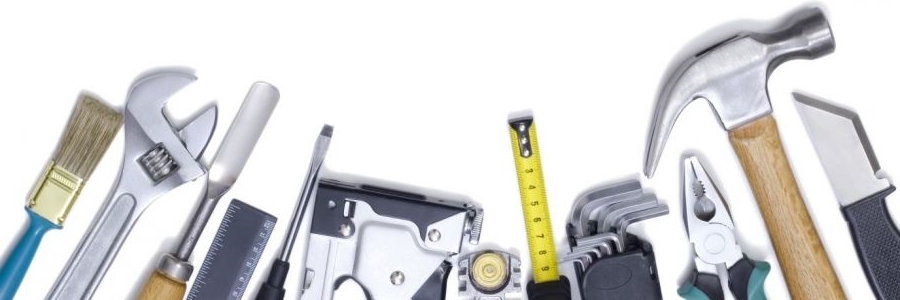
Dear Maintenance Men:
By Jerry L’Ecuyer & Frank Alvarez
Dear Maintenance Men:
I have floating vinyl tile flooring in my rental unit. One of the tiles in the middle of the floor has been damaged. How do I go about replacing one tile without damaging the surrounding tiles?
Bryan
Dear Bryan:
Floating floors do not use glue to hold them down. The tiles click together and form a floating membrane over the substrate. Replacing the damaged tile is not too hard but does need a little attention to detail. Make sure you have a spare tile to replace the damaged tile.
Mark the damaged tile with a marker down the center of the tile. Then mark lines at a 45-degree angle from each corner that meet the center line. (The marker lines should look like a stick figure hangman drawing without the head.)
Using a circular saw set the blade to the thickness of the tile. Make a cut or incision through the center of the tile stopping short of each end. Now cut the 45-degree lines intersecting the center line. Stop the cut just short of the corners. Using a chisel, finish the cut all the way into the corners. (Do not cut into any adjacent tiles.) Gently lift the cut pieces and remove them from the floor.
You will need to modify the new replacement tile before installation. The replacement tile or board should be the same size as the damaged tile. The tiles use a “Tongue & Groove” system for installation. The tongue on one edge and end of the tile will need to be removed with a utility knife. After modifying the replacement tile or board, apply drops of glue to the trimmed edges and to the exposed tongue of the existing tiles on the floor. Slip the tile into place, use a mallet with a scrape piece of wood to tap the floorboard down. Wipe away any glue that might squeeze out. Place a heavy object to weigh down the replacement tile or board until the glue is dry.
Dear Maintenance Men:
I have taken over management of an apartment building that has individual 30-gal water heaters in each unit. Some of the heaters look new, but most are old looking. How long do most heaters last and what are some signs of imminent failure?
Bill
Dear Bill:
The chances of several heaters failing all at once are very slim. The cost of replacement can be spread over a period of time. The average life span of a typical 30 or 40-gallon water-heater is about 10 to 12 years; some may last much longer, some less depending on use. A sign the end may be near is banging noises coming from the heater, short hot water supply and long heater cycle times producing lukewarm water. If you find water pooling at the base of the heater … replace it immediately, it has FAILED!!
Dear Maintenance Men:
I own 8 units and enjoy doing minor maintenance around my building. One of my current projects is to repair three persistent leaks on my roof. The property has a flat roof. Can you give me some advice on tracking down these leaks?
Don
Dear Don:
Flat roof leaks can be extremely tricky to trouble shoot. Water intrusions tend to travel, then drop at the lowest point of your roof and ceilings. A careful inspection would include checking the following:
- Flashing around vent stacks and gravel stop roof edges.
- Exposed roofing nail heads.
- Drainage systems on the roof or directly adjacent to the building.
- Exposed roofing that is devoid of grave or stone cover.
- Roof seams or laps.
- Blisters and water pooling areas on the roof.
Some solutions and preventative maintenance:
- Caulk all flashings and exposed roof seams with roofing Heney’s 208 Roof Patch or other brand roof sealant. It comes in gallon or tube form.
- Caulk any exposed roofing nails.
- Score blisters with a utility knife and inject Henry’s 208 with a caulking gun into the blister opening. Apply pressure until cement oozes out of the cut. Install desired size of cap sheet as a patch.
- Cover any exposed roofing material with gravel or stone. (This keeps the sun from rotting the material.)
- Secure any loose gutters and clean out drainage systems.
- Seal any cracks in the stucco, water can wick into these cracks.
- You may want to consider installing roof drains in the areas that rainwater pools the most.
WE NEED Maintenance Questions!!! If you would like to see your maintenance question in the “Dear Maintenance Men:” column, please send in your questions to: DearMaintenanceMen@gmail.com



